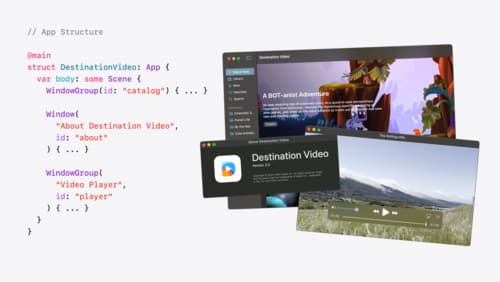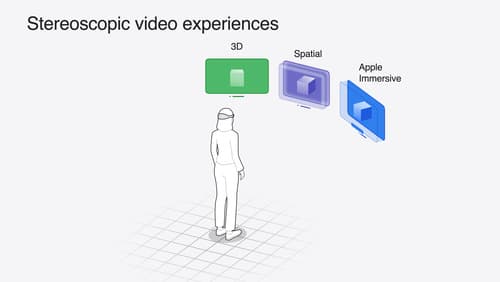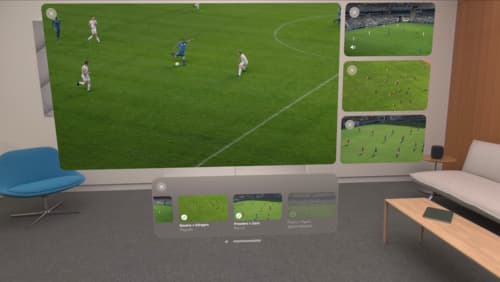Custom avplayer
Asked on 2024-08-06
1 search
To create a custom AVPlayer, you can leverage various features and capabilities provided by AVKit and AVFoundation, as discussed in several WWDC sessions. Here are some key points and sessions that might be relevant to your needs:
-
AVPlayerViewController:
- AVPlayerViewController offers a familiar user interface and integrates with many system features. It supports both 2D and 3D video, making it a versatile option for various types of content.
- For visionOS, AVPlayerViewController can be used to create a multiview experience, allowing multiple video screens to be viewed simultaneously. This is particularly useful for watching multiple streams or different camera angles of the same event.
- Explore multiview video playback in visionOS (01:05)
-
Fullscreen and Spatial Video:
- To make content fullscreen, you can size the AVPlayerViewController to match the frame of the window scene. Note that in fullscreen, AVPlayerViewController will use the 3D video presentation.
- For full spatial presentation, consider using the preview application instead.
- Build compelling spatial photo and video experiences (12:22)
-
Custom Docking Region:
- You can customize the docking location of the video screen in an immersive space by specifying a custom docking region. This can be done using Reality Composer Pro to place your video into the ideal location of your custom environment.
- Enhance the immersion of media viewing in custom environments (03:11)
-
Window Placement and Size:
- When dealing with different screen sizes and external monitor configurations, you can specify the initial placement of a newly created player window using the default window placement modifier. This ensures the video is shown at its native size or adjusted to fit the screen appropriately.
- Tailor macOS windows with SwiftUI (06:25)
-
Performance Metrics:
- For media playback, you can obtain client-side metrics via access logs, error logs, and various AVPlayer notifications. This helps in monitoring and optimizing playback performance.
- Discover media performance metrics in AVFoundation (01:10)
By utilizing these features and sessions, you can create a custom AVPlayer that is tailored to your specific needs, whether it's for a standard 2D video, a 3D immersive experience, or a multiview setup.

Tailor macOS windows with SwiftUI
Make your windows feel tailor-made for macOS. Fine-tune your app’s windows for focused purposes, ease of use, and to express functionality. Use SwiftUI to style window toolbars and backgrounds. Arrange your windows with precision, and make smart decisions about restoration and minimization.

Build compelling spatial photo and video experiences
Learn how to adopt spatial photos and videos in your apps. Explore the different types of stereoscopic media and find out how to capture spatial videos in your iOS app on iPhone 15 Pro. Discover the various ways to detect and present spatial media, including the new QuickLook Preview Application API in visionOS. And take a deep dive into the metadata and stereo concepts that make a photo or video spatial.

Explore multiview video playback in visionOS
Learn how AVExperienceController can enable playback of multiple videos on Apple Vision Pro. Review best practices for adoption and explore great use cases, like viewing a sports broadcast from different angles or watching multiple games simultaneously. And discover how to design a compelling and intuitive multiview experience in your app.
